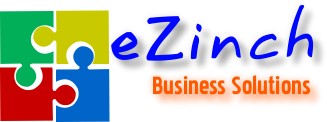EZinch, has started to collaborate with schools, developing Web site management systems for the education industry. Our leading edge, user-friendly modules improve communications and strengthen the school-home-community network.
With a complete suite of Web-based components, we empower users with one-click control over site content, navigation, images and files with no programming knowledge required and no software to download.
Whether you are a single school or district, our web-based system will provide all the tools you'll need in managing your website.
The vibrant and professional pre-designed templates will revitalize your site at an affordable cost. With a template-based system, you can focus on important content and upload images or files in minutes without having to worry about the overall graphics.
Easily update school news items, lunch menus, sports schedules, upcoming events or job opportunities.
Suitable for all skill levels, authors are empowered with one-click control over a complete suite of online applications; no programming knowledge required and no software to download.
With increasing community demands for current, reliable information, hundreds of schools and districts have partnered with EZinch to take their sites to the next level.
Convenient online accessibility and user-friendly applications empower authors with one-click control over navigation, content, images, and staff permissions/restrictions.
Updating staff directories, job postings, lunch menus or sports schedules is quick and easy. All applications are PC and Mac compatible with no programming knowledge required and no software to install.



